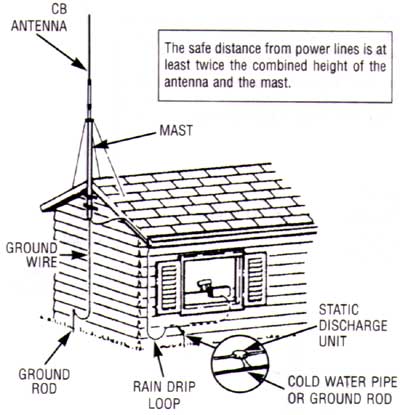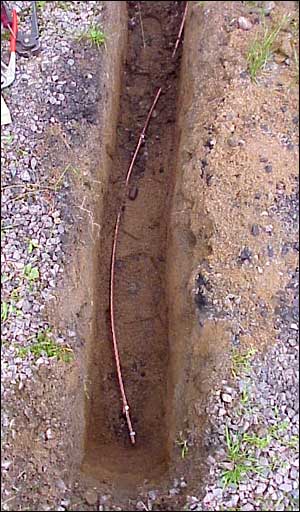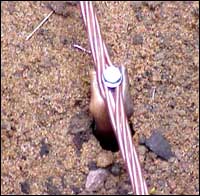|
|

Grounding HOW-TO
The complete Grounding HOW-TO in Text format.
A sample 'Real-life' Grounding System.
Page 1 -
Page 2 -
Page 3 -
Page 4 -
Page 5
Principle RF-Grounding and Lightning Arrest
If your antenna location is high and open,- you might also consider
complementing your grounding system with a Lightning arrests system.
First some warnings!!
An un proper installation of lightning arrest system might increase
the risk and damage in case of actual stroke of lightning,- also get
some advice from your local electrician he might have some information
about local considerations about ground conditions o.e. that might
concern you.
The lightning arrest system.
Mainly,- the lightning arrest system can be described as a strongly ower
dimensioned grounding of your antenna-mast or other antenna supporting
structure. It consists of tre important parts:
A ground conductor - made by cupper leads or roods at Sufficient length
or deeply into the ground.
Sufficient ground-wire,- connecting the ground conductor to mast structure.
Firm attacment to mast structure,- and the mast structure itself.
The above parts has two impotant electrical 'connections' that is critical to
performance and function. These connections must be done proper.
The ground conductor in the ground on up to the ground-wire.
From ground-wire and to antenna-mast or other antenna supporting structure.
If your about to install a lightning arrests system.
At this time you MUST also install some static-arrests to your Antenna cable.

Complete Grounding Lineout
Making the Ground Conductor

|
Ground Conductor
The image shows a ditch about 100cm deep with four(4) 100cm cupper rods,- connected together in parallel using the extended Ground-Wire.
A sufficient ground conductor is made of a solid cupper rood,- at least
10-12 millimeter in diameter and 8ft of lenght (240cm)
If your on rock
hard or solid rock ground you could use a number if shorter roods with
some distance inbetween connected to the ground lead in paralell or simply
extend lenght of the ground-wire down into the ground in sufficient length
to make it work as the ground-conductor,
The lenght under ground needs
to be at least tree times the lenght of equal conductor rood.
(In this case equal to 3x240cm = 720cm of ground-wire for ground-conductor)
|
To connect ground-wire to ground conductor roods use metal tube-clamps,-
if possible drill wholes and use metal (self drilling) screws to get good
electrical contact.
BACKFILL MATERIALS
The Ground-conductor can also be improved with propper chemicals, one that is often used in professional- telecommunication installations is
Electro-Fill, you can find more information at: http://www.sgscorp.com/product.htm
| 
|
Page 1 -
Page 2 -
Page 3 -
Page 4 -
Page 5
*** End of page ***
Back to Start page.

|




